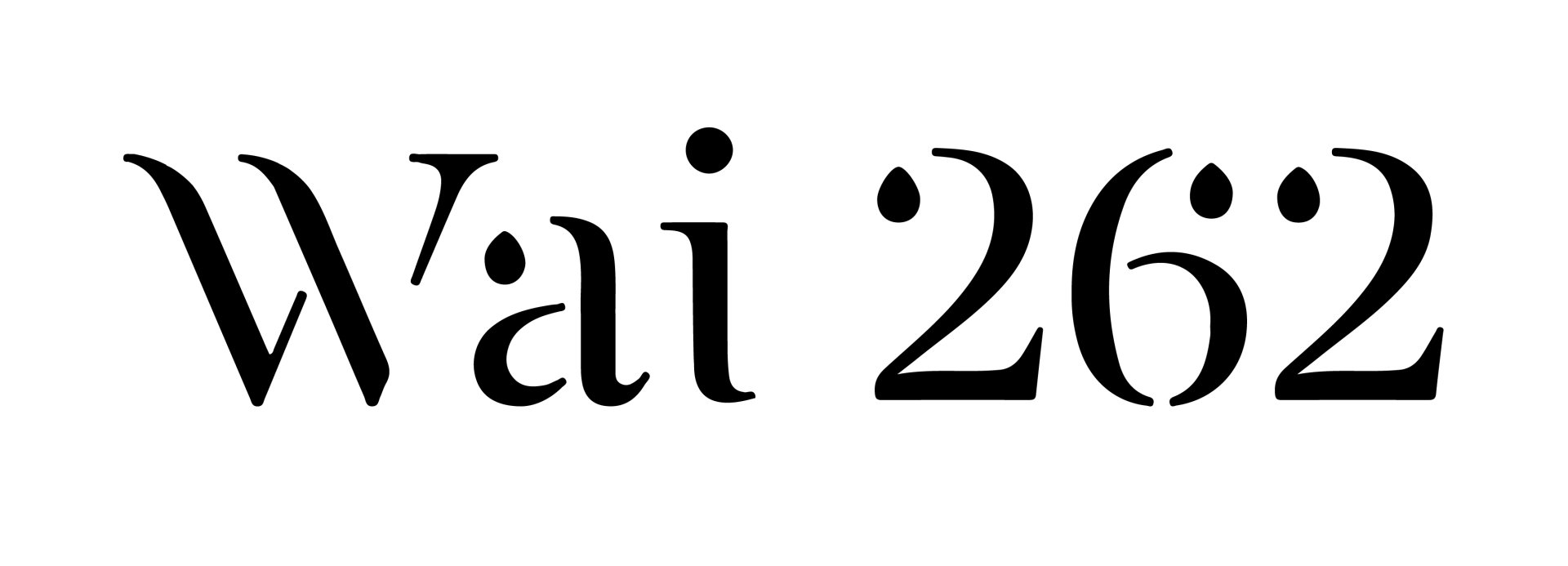Ngā Pātai
WAI 262 Questions and Answers
-
What is the Wai 262 claim?
Wai 262 is the 262nd claim registered with the Waitangi Tribunal. It was lodged on 9 October 1991 by six claimants on behalf of themselves and their iwi: Saana Waitai-Murray (Ngāti Kurī), Hema Nui a Tawhaki Witana (Te Rarawa), Te Witi McMath (Ngāti Wai), Tama Poata (Ngāti Porou), Kataraina Rimene (Ngāti Kahungunu), and John Hippolite (Ngāti Koata). Read more online here
-
What is the claim about?
The claim is about the place of Māori culture, identity and traditional knowledge in New Zealand's laws, and in government policies and practices. It concerns who controls Māori traditional knowledge, who controls artistic and cultural works such as haka and waiata, and who controls the environment that created Māori culture. It also concerns the place in contemporary New Zealand life of core Māori cultural values such as the obligation of iwi and hapū to act as kaitiaki (cultural guardians) towards taonga (treasured things) such as traditional knowledge, artistic and cultural works, important places, and flora and fauna that are significant to iwi or hapū identity.
-
How significant is this inquiry?
The Wai 262 inquiry is one of the most complex and far-reaching in the Tribunal's history. It is the Tribunal's first whole-of-government inquiry. It is also the first Tribunal inquiry to specifically address the Treaty relationship beyond the settlement of historical grievances.
-
What does the Treaty say about Māori culture and identity?
The Treaty established a partnership between Māori and the Crown. Through this partnership, the Crown won the right to govern and enact laws, but that right was qualified by the guarantee of 'tino rangatiratanga' (full authority) for iwi and hapū over their 'taonga katoa' (all their treasured things).
This requires the Crown, as far as practicable, to ensure that iwi and hapū have authority over taonga such as those referred to above, which are core aspects of Māori culture and identity.
The Tribunal recognises that in a modern New Zealand context full authority will not always be possible, and that the interests of iwi and hapū will instead have to balanced alongside the interests of other New Zealanders.
See Ko Aotearoa Tēnei: Te Taumata Tuatahi, introduction (pages 15–24) for a more detailed explanation of what the claim is about and what the Treaty relationship requires.
-
Is the Wai 262 inquiry about historical claims?
Many whānau ask if Wai 262 is about historical issues.
It isn't.
The rangatira who lodged Wai the 262 did refer to historical issues such as the loss of Māori land, the Crown suppression of te reo Māori, and specific laws like the Tohunga Suppression Act,
However, these rangatira more than thirty years ago and before and beyond sought to restore "te tino rangatiratanga o ngā taonga me ngā mātauranga Māori". Wai 262 is the first all of government claim and one of most significant claims in Aotearoa's history.
The rangatira who lodged Wai 262 were and are challenging the Crown and its agencies to address the Treaty relationship now and into the future.
-
What has the Tribunal recommended?
The Tribunal recommended that the Crown:
- Establish Treaty partnership bodies in education, conservation, culture and heritage, a new commission to protect Māori cultural works, a new funding agency for Mātauranga Māori in science and expanded roles for agencies like Te Taura Whiri i te Reo Māori, newly established national rongoā Māori body and Māori advisory bodies relating to patents and environmental protection
- Improve support for rongoā Māori, te reo Māori and Māori culture and traditional knowledge.
- Law amendments regarding Māori language, resource management, wildlife, conservation, cultural artifacts, environmental protection, patents and plant varieties etc.
-
Why has it taken so long (ten years) since the Crowns reports for Māori to be engaged in the kōrero?
It has taken some time to get our Taumata Whakapūmau reestablished and stood up. 2022 is the time to initiate the Kanohi Ora engagement strategy so that the process can be whānau, hapū and iwi led and Māoridom can decide what the next steps forward will be. Please ensure you have signed up to our e-pānui so you can stay connected to this next phase of the journey.


